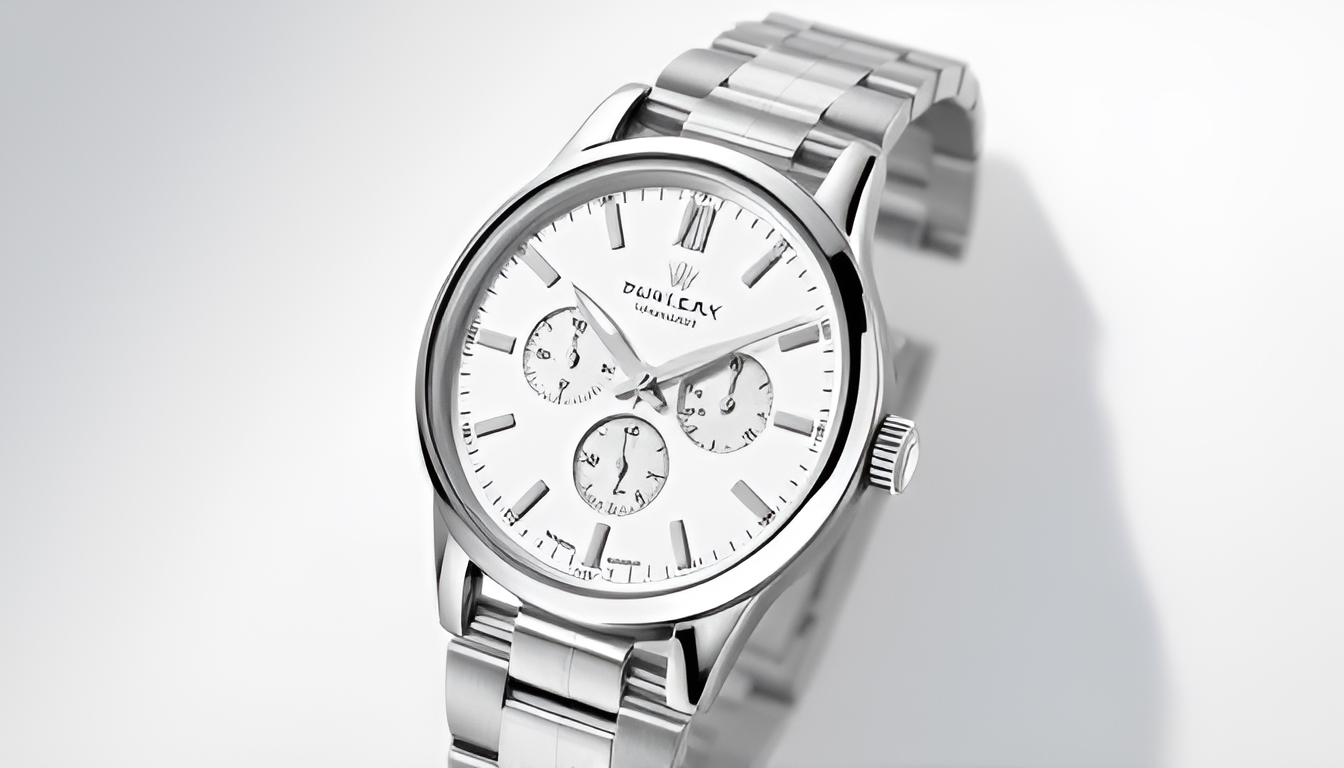The Timeless Appeal of Watches with Integrated Bracelets: A Fusion of Elegance and Innovation
Introduction
Watches with integrated bracelets have become an iconic symbol of refined watchmaking, merging aesthetics, craftsmanship, and practicality into a seamless design. From their origins in the luxury sports watch category to their place in contemporary watch collections, these timepieces offer an unparalleled blend of form and function. In this article, we’ll explore what defines a watch with an integrated bracelet, its unique appeal, the history behind this innovation, and why it remains a coveted choice among watch collectors and enthusiasts.
What is a Watch with an Integrated Bracelet?
A watch with an integrated bracelet is one in which the bracelet or strap is seamlessly connected to the watch case. Unlike traditional watches that use standard lugs to attach interchangeable straps, an integrated bracelet is designed as an essential part of the watch’s overall structure. The case and bracelet transition smoothly into one another, creating a fluid and cohesive look that sets these watches apart from their counterparts.
This design approach isn’t just about aesthetics; it enhances the overall wearability of the watch. The bracelet’s shape and structure are typically engineered to contour the wrist for maximum comfort and stability. The result is a timepiece that not only looks sleek but also feels like a natural extension of the wearer’s arm.
The Origins: Luxury Sports Watches of the 1970s
The concept of the integrated bracelet is often traced back to the 1970s, an era that saw a revolution in watch design. Before this, most watches adhered to a more classical approach, with interchangeable leather or metal straps. However, the introduction of luxury sports watches redefined how watches could be worn, both in terms of style and functionality.
One of the pioneers in this movement was Audemars Piguet, with their now-legendary Royal Oak, designed by the renowned Swiss watch designer Gérald Genta in 1972. Genta broke away from the conventional design philosophy by crafting a watch where the bracelet was not an afterthought but an integral part of the watch’s identity. The Royal Oak’s octagonal bezel, combined with the integrated stainless steel bracelet, gave it a robust yet elegant appearance—an entirely new concept in luxury watchmaking at the time.
Soon after, Patek Philippe followed suit with the introduction of the Nautilus, also designed by Genta. Released in 1976, the Nautilus featured a similar concept of an integrated bracelet, with its porthole-inspired case and sleek steel design. These timepieces not only changed the trajectory of sports watches but also helped to define the aesthetics of luxury steel watches for generations to come.
Why Watches with Integrated Bracelets Stand Out
The appeal of watches with integrated bracelets goes beyond their rich history and association with iconic models. Here are some reasons why they continue to captivate watch collectors and aficionados:
1. A Unified Aesthetic
An integrated bracelet creates a harmonious and cohesive design that enhances the visual appeal of the watch. There are no gaps between the case and bracelet, and the lines flow seamlessly from one to the other. This gives the timepiece a sophisticated, streamlined look that can be both sporty and elegant. The integration allows the watch to make a bold statement, whether worn with formal attire or in casual settings.
2. Enhanced Comfort
The bracelet of an integrated design is often engineered to complement the shape of the case and to contour the wearer’s wrist more comfortably. This results in a snug, secure fit, making the watch feel more natural during wear. The design also ensures that the weight of the watch is distributed evenly, adding to the overall comfort, particularly for heavier models made from materials like stainless steel or titanium.
3. Exclusive and Iconic Designs
Many watches with integrated bracelets come from prestigious watch brands and are often part of their flagship collections. These models have become icons in the horological world. Brands like Audemars Piguet, Patek Philippe, Vacheron Constantin, and Girard-Perregaux all offer famous watches with integrated bracelets, making them highly sought after by collectors. The exclusive nature of these watches often leads to limited availability and high resale values.
4. Durability and Functionality
Watches with integrated bracelets are typically built to be durable and long-lasting, making them ideal for those seeking a watch that can handle everyday wear. The sports-luxury category, in particular, prioritizes both strength and elegance. For instance, stainless steel bracelets are robust and scratch-resistant, ensuring that the watch maintains its sleek appearance even after years of use.
5. Timelessness
While watch trends may come and go, timepieces with integrated bracelets have an enduring appeal. Their unique combination of craftsmanship, luxury materials, and innovative design makes them timeless. Models like the Royal Oak and Nautilus, which were once considered avant-garde, are now classics that stand the test of time.
Modern Innovations in Integrated Bracelet Watches
In recent years, many watch brands have continued to innovate within the integrated bracelet category. Some contemporary models maintain the classic steel look, while others experiment with different materials such as titanium, ceramic, and even rubber. For example, Hublot and Omega have released sports watches with integrated rubber straps that offer a more casual, sporty aesthetic, while still maintaining the seamless design principles.
Technological advancements have also influenced the development of integrated bracelet watches. Some brands are incorporating high-tech materials that increase both the durability and lightness of the bracelet. Others are adding mechanical complexity with in-house movements, making these watches not only visually striking but also highly functional.
How to Style a Watch with an Integrated Bracelet
One of the greatest strengths of a watch with an integrated bracelet is its versatility. These watches are often designed to transition easily between different settings and occasions. Here are some ways to style them:
- Formal Settings: Pair your integrated bracelet watch with a tailored suit or formal attire. The sleek lines and metallic finish of many luxury sports watches with integrated bracelets make them a perfect match for formal wear, elevating your look without being too flashy.
- Casual or Weekend Wear: For a more relaxed look, an integrated bracelet watch in stainless steel or titanium can be worn with smart casual outfits like polo shirts, chinos, or jeans. The durability of these watches ensures they can handle more active, everyday environments without losing their refined appeal.
- Active and Outdoor Lifestyles: Many integrated bracelet watches, particularly those made with materials like rubber or titanium, are well-suited for outdoor activities. Whether you’re on a hike or enjoying a weekend by the beach, these watches combine ruggedness with style.
Conclusion
Watches with integrated bracelets represent a perfect balance of style, comfort, and engineering. Whether you’re drawn to their seamless design, rich history, or their timeless appeal, these timepieces are a testament to innovative watchmaking. Iconic models like the Audemars Piguet Royal Oak and Patek Philippe Nautilus continue to inspire, while modern interpretations offer new materials and technological advancements that ensure this design remains a favorite among watch lovers.
If you’re looking to invest in a watch that offers both versatility and distinction, a timepiece with an integrated bracelet is a perfect choice—offering a look that’s as striking today as it was decades ago.






